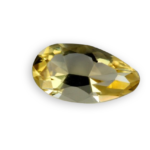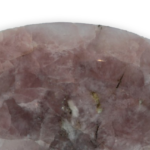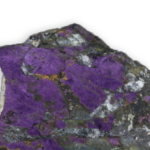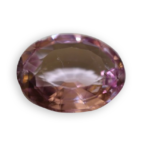
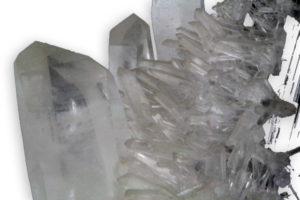
rock crystal
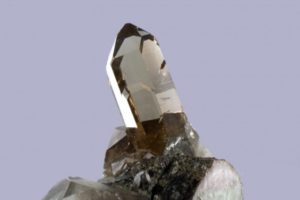
smoked quartz crystal from Brazil
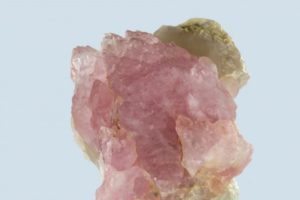
crystallized pink quartz from Brazil
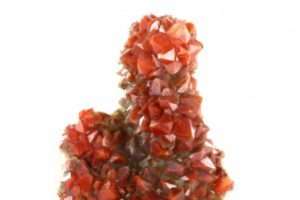
hematoide quartz from Argentolle in France
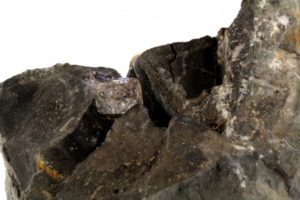
quartz crystal in a septarium from Rémuzat in France
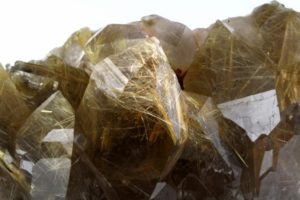
smoky quartz to crystallized rutile Venus – hair from Brazil
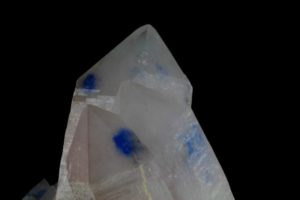
crystallized quartz as pappagoite inclusions, South Africa
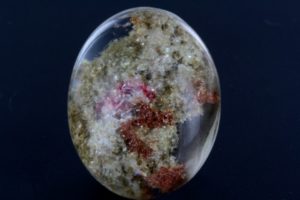
quartz cabochon from Brazil
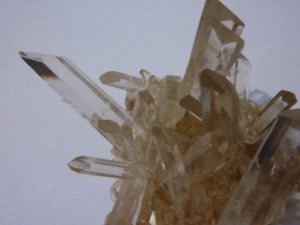
quartz crystals from La Gardette France
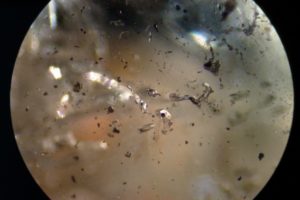
liquid – gas like inclusions, hydrocarbons bubble with gas bubble
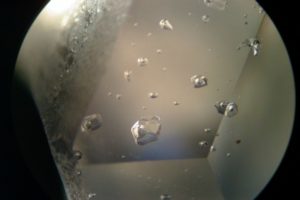
bubble like inclusion with gas bubble in liquid
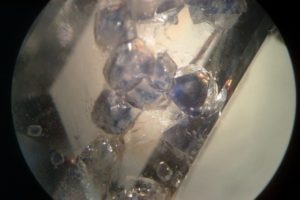
fluorite crystals inclusions in a quartz
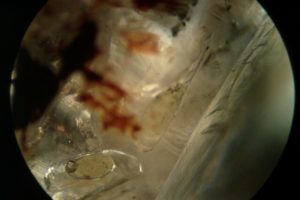
mobile gas bubble in the liquid
Detailed sheet
rock crystal
The name quartz comes from a slavic word meaning “hard”. Rock crystal comes from the Greek “krystallos” meaning ice, because the ancients believed that it was “eternal ice”.
It is a mineral, often regarded as a rock as it is widespread in various aspects and sometimes as a gemstone, rock crystal is the variety most prized by gemologists, jewelers, sculptors and art objects.
The smoky quartz is brown to almost black, or black (morion quartz), the latter coming from a natural or artificial irradiation with gamma rays.
Yellow quartz is called citrine and purple quartz amethyst.
The prasiolite (or prasolite) is a non-natural colored quartz, so named after the Greek “prason” for green and “litho” for stone, as it is leek green, and obtained by heating to 650 ° C an amethyst or a yellowish quartz from Brazil.
Rose quartz : its color is due to nano-fibers of dumortierite in massive rose quartz, while for crystal rose quartz color is due to natural radiation, the pink color may fade. It may present a phenomenon of asterism due to very fine inclusions of rutile.
The binghamite is the trade name for a variety of quartz with gray-brown speckle effects when cut cabochon.
Quartz is the standard of hardness 7 on the Mohs scale, which counts 10.
Quartz was used because of its hardness since prehistoric times to make tools and weapons in France and Ethiopia (dated more than 2 million years) and scrapers and arrowheads were placed in tombs in China already over 600,000 years ago. During the Neolithic in the Far East and India, it was already known how to drill it and mount its fragments for necklaces. Later, in Sumer, quartz was present as amulets, seals, items of adornment. The Egyptians used it to make statues of their gods, vases, would encrust it in their jewels and served as “living” eyes for their statues. Subsequently, all civilizations including the Greeks, Romans, Hindus … used quartz.

CHEMICAL CHARACTERISTICS
SiO2
silica, silicon dioxide

PHYSICAL CHARACTERISTICS
Main color
colourless
Other colors
white, brown, black, pink, green
Rock crystal is colorless, quartz it exist in many colors
Color of streak
white
Luster
vitreous
Hardness
7.0 to 0.0
Density
2.65 to 0.00
Cleavage
none
Fracture
conchoidal

OPTICAL PROPERTIES
Transparency
transparent
Refractive index
1.543 - 1.554
Double refraction
0.009
very weak, uniaxial (+)
visible double refraction
No
Dispersion
0.013(0.008)
Pleochroism
variable
Number of colors
1
definite pleochroism for smoky- quartz : brown, reddish brown; for pink quartz: weak, very weak for prasiolite
Fluorescence
none
Inclusions
many: rutile, actinolite, chlorite, gold, pyrite, tourmaline, goethite, feldspars, gilalite, hollandite, thulite, dioptase ...

CRYSTALS PROPERTIES
pseudo-hexagonal prisms terminated by six-sided pyramid often unequal
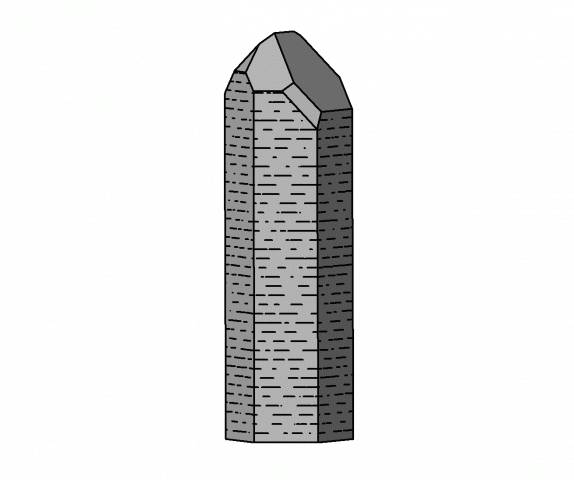
crystals system
trigonal

OTHER INFORMATIONS
Astrological sign
Aries, Capricorn, Leo, Libra, Scorpio

APPROACHING GEMS
Exploited
sites
They are very numerous. Crystals of several hundred kg.( hundreds of pounds ) are known, but those that can be cut are quite rare. They often contain various inclusions. In Brazil, the United States, Russia (Urals), the European Alps, Madagascar … in France the gold mine of La Gardette, near Bourg d’Oisans in Isere has produced quartz of exceptional clarity, sometimes twinned.
The rose quartz comes from Brazil and Madagascar (from which the best quality) but also Moazambique, India, Namibia, Sri Lanka.
The smoky quartz and morion, comes from Brazil, French Alps (Mont Blanc) and Switzerland (Graubünden), Russia, Scotland, Madagascar and Ukraine …
use in jewelry
The rock crystal has been widely used during the “Art Deco” period in the 30’s, when it was re-discovered. Today it is cut in all forms: in cabochons, faceted, rods, in emerald cut … and it is used to make decorative objects the most diverse, such as key chains and even Buddha and virile members erect in Asia!
It also has industrial uses in watchmaking because of its optical and piezoelectric qualities.
Prasiolite Quartz: faceted, it is made into rings or it is set in pendants.
Rose Quartz: it is cut cabochon in balls for necklaces, it is carved into decorative objects, the transparent samples are cut in facets.
Smoky quartz or with rutile inclusions: it is very popular and it is used to make pendants, rings, balls.
The variety with rutile needles in quartz is called hair of Venus, with actinolite needles: quartz-hair of Thetis.
Quartz may contain numerous inclusions that give it a very particular aesthetic: quartz thulite (pink aspect), quartz, tourmaline (black needles) quartz hollandite, at gilalite (also called “medusa quartz” or “paraiba quartz”), at dioptase (green). Orange-red inclusions, sometimes associated with strips of black goethite which makes it dimorphic, consist of lepidocrocite which is an iron hydroxide also a constituent of limonite.
The cut rock crystal has been called “diamond” of Alaska, Arkansas, Dauphine, Matura etc…. all these names in jewelry are prohibited.
Daily care
and precautions
The quartz are easy to maintain, they are hard and very little sensitive to household products. Wash with water and liquid detergent, rinse with clear water and then with alcohol.
imitations and
treatments
Rock crystal was so popular that we can say it has caused the invention of glass by the Venetians in the fifteenth century to imitate it ! The clear crystal or synthetically colored exists and is used industrially in optics and clocks (quartz watches).
In recent years we have seen come to market some new treated green and blue quartz: the greens are of amethyst heated to high temperatures and the blue ones are irradiated to achieve this color.
Historical
healing properties
Quartz directs forces towards terrestrial life and reminds us that each subject is the condensation of light vibrations. It would support and would remove anything that hinders our spiritual evolution. It would make our soul more transparent. It is a stone that would have great importance for people with depression or fleeing their responsibilities. A crystal in each hand and under each foot, its tip opposite to the body, would drive out the old structures and rid us of the negative energies and it would let the higher energies in.
If it is pink, it occurs at the heart chakra and would invite to sweetness, tenderness and love, its reviving radiation would influence our heart, washing it from the outrages, pains and profanities suffered.
historical stones
and related legends
The Apollo gallery, at the Louvre Museum ( Paris, France ), retains nearly two hundred bowls, vases, sink bowls from the sixteenth century carved in rock crystal and the Pitti Palace (Italy) is home to the prestigious collection of the Medici.
The Natural History Museum in Paris exhibits, amongst others, a cup of rock crystal, which belonged to Louis XIV, engraved in intaglio, 17 cm. high (6.7 inches ). The Smithsonian Institute holds a sphere 35 centimeters in diameter (13.8 inches ) perfectly transparent carved from a 48.5 kg (100 pounds ) block from Burma and and a faceted egg of 7000carats.
Venez visitez
notre site web
voillot-joaillier.fr
Lorem ipsum dolor sit amet, consectetur adipiscing elit. Ut elit tellus, luctus nec ullamcorper mattis, pulvinar dapibus leo.Lorem ipsum dolor sit amet, consectetur adipiscing elit. Ut elit tellus, luctus nec ullamcorper mattis, pulvinar dapibus leo consectetur adipiscing elit. Ut elit tellus, luctus nec.

